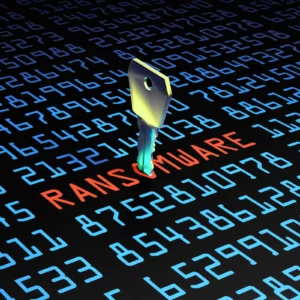Remote Work Effectiveness Audit
$6,000.00
Remote work is now the standard. This Remote Work Effectiveness Audit will provide the organization with an awareness of how well your remote managers and staff function in their roles. It will also provide recommendations and a roadmap to a more effective remote workforce.
Description
Remote Work Effectiveness Audit
Why does an organization need a Remote Work Effectiveness Audit?
Remote work is a reality in today’s work environment, as existing and future employees desire at least some level of remote work access. Additionally, a robust remote work culture broadens the organization’s hiring opportunities; it can seek and keep the best and brightest employees without geographic boundaries.
An organization’s success with remote workforce engagement includes the following:
- Knowing the cultural adaptations.
- Adjusting to performance management changes.
- Coaching and leading effectively, as the days of “managing by walking around” are past.
- Implementing necessary technology solutions.
A Remote Work Effectiveness Audit will dive deep into the organization’s strengths and opportunities around the current remote work environment and recommend actionable solutions for becoming a successful and sustainable remote work organization.
Who can benefit from a Remote Work Effectiveness Audit?
First, every organization needs more consistency in remote work policies, alignment from manager to manager, and silo-to-silo in how remote workers and their work are managed, coached, and
performance monitored. Any misalignments and inconsistencies negatively impact
performance, engagement, and job satisfaction.
A Remote Work Effectiveness Audit is vital to the engagement of all employees, from individual contributors to Senior Leadership. Increased levels of engagement lead to increased profitability and sustainability for the organization.
What does the Remote Work Effectiveness Audit include?
The Remote Work Effectiveness Audit consists of four phases:
- Phase 1: Executive Kick-off
- Phase 2: Discovery
- Phase 3: The Remote Effectiveness Report
- Phase 4: Executive Summary Presentation
Phase 1: Executive Kick-off
The Executive Kick-off is a half to one-day, onsite or Zoom meeting with the executive team.
This phase is designed to help the organization reach a consensus on the current and future “rules for remote workers.” We will look at where the organization is today and develop the expectations for how remote employees will be managed, coached, and mentored.
Executive Kick-off Agenda
- Identify a Remote Work Effectiveness Audit’s purpose, process, and expected outcomes.
- Gain consensus on the remote employees’ obligations and expectations.
-
- The current state of remote/hybrid work.
- Vision for remote/hybrid work and the optimal future state.
- Concerns or challenges experienced from remote/hybrid workforce.
- Where there is alignment and misalignment in the executive suite on the future of remote/hybrid work.
- The way leadership is supporting managers of remote workers.
- Working hours expectations, including flexibility and availability.
- Online engagement and activities.
- Video meeting etiquette.
The information gathered in this meeting will be used during Phase 2 as the standard “rules for remote workers” when evaluating whether the current state is consistent and aligned across the organization. This information will also help drive recommended solutions that support the organization’s Mission, Vision, and Core Values.
Phase 2: Discovery
Leading2Leadership will conduct 50+ Zoom interviews of 45 minutes each with the following employee segments during this phase. The responses will be anonymized; therefore, comments cannot be attributable to a specific manager, employee, or department.
Cross-section of “tactical/frontline/entry level” remote/hybrid employees (~20).
The purpose of these interviews is to understand the employees’ needs to become more productive and effective in their roles, including:
- The employees’ truths about being coached and managed as remote employees.
- Where remote employees are struggling with work-life balance and mental health.
- Where there are possible improvements for the remote employees.
Cross-section of managers and supervisors that oversee remote/hybrid staff (~20).
The purpose of these interviews is to learn the following:
- What they need to be better managers and coaches for their team.
- How they are managing their remote team.
- How they conduct one-to-ones and the format they use.
- How they currently drive performance and engagement.
- What tools and resources would make their management jobs better.
- How they now communicate the cultural expectations.
- How they are handling remote employee accessibility, engagement, and productivity.
- How they are being coached and managed.
Phase 3: The Remote Effectiveness Report (RER).
The RER is an executive summary detailing what was learned during Phase 2 – Discovery. This summary will be emailed to the executive team for review before the start of Phase 4.
The RER will reveal the following:
- The array of ways remote employees are currently being managed.
- Various methods are used to coach and mentor staff, tasks, and projects.
- The range of methods supervisors use to engage with their teams.
- Where the organization is aligned and misaligned.
- What the current remote work culture is.
- The gaps between the current state and the optimal future state.
- Actionable recommendations on how to attain alignment.
- A road map for getting from the current state to the optimal future state, as defined by the executive team in Phase 1.
Phase 4: Executive Summary Presentation
The Executive Summary Presentation is a half to one-day, onsite or Zoom meeting with the executive team. The RER will be reviewed and discussed with the consultants facilitating this meeting.
Executive Summary Presentation Agenda
- Overview of the RER with discussion (PowerPoint).
- Attain agreement on what recommendations the executive team wants to act on.
- Set priorities for the resources and budget (this is not budgeting but about agreeing on each recommendation’s importance).
- Communicate the expectations of the owner for each recommendation chosen.
- Assign an owner to each recommendation.
- Identify the next steps for the owner and the organization.





Reviews
There are no reviews yet.